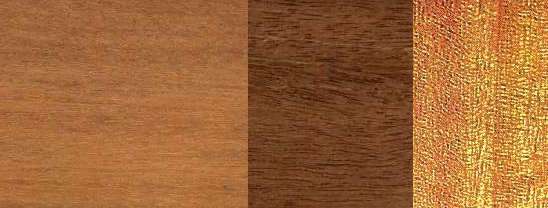
Chan oi (Parashorea stellata)
Family: Dipterocarpaceae
Common names: Chan oi, Chengal, Chengal tiga banir, Cho chi, Dmar laut, Gerutu, Gerutu-gerutu, Gerutugerutu, Hao, Kabba, Kadut, Kadutni, Kadutpyu, Kai kieo, Kaunghmu, Kawthu, Kawwa, Khai kheio, Khai kieo, Khaikhieo, Khamin dam, Kheikhio, Khian sai, Kobe, Koungnhoo, Lemasa, Mai hao, Mangirawan, Maranti botino, May cho chi, May hao, Meluit, Meranti gerutu, Meranti putih, Meranti sabut, Panthitya, Pat lang khieo, Suai, Takhian-sarmporn, Tambun ranggas, Tavoy wood, Tengkawang pasir, Thakhiansarmorn, Thingadu, White meranti
Distributed in: Brunei, Burma, Cambodia, Laos, Malaysia, Thailand, Vietnam (Oceania and S.E. Asia)
Common uses: Boat building (general), Boxes and crates, Cabinetmaking, Flooring, Furniture, Heavy construction, Joinery, Light construction, Paneling, Particleboard, Plywood, Poles, Pulp/Paper products, Railroad ties, Vehicle parts, Veneer
Tree size: Trunk diameter is 150-200 cm
Colors: the heart isYellow, Yellow to golden-yellow to orangeand the sapwoodWhite to yellow, Yellow.The grain isVariable figure, the textureMedium coarse to coarseand the lusterLustrous
Natural durability: Susceptible to insect attack, Susceptible to marine borer attack
Kiln Schedules: Kiln Drying Rate (in days) is slow
Kiln Drying Rate: Very slow (>28 days for boards < 32 mm, to >84 days for boards >= 63 mm)
Drying Defects: Moderate twist/warp, Slight surface checking
Ease of Drying: Rapidly
Tree Identification: Bole/stem form is misshapen
Comments: General finishing qualities are rated as good
Blunting Effect: Blunting effect on machining is moderate
Boring: Easy
Cutting Resistance: Cutting Resistance with dry wood is easy
Mortising: Finishes well
Nailing: Fair to Good , Very Good to Excellent
Planing: Planes well, to a good finish
Resistance to Impregnation: Permeable sapwood
Response to hand tools: Fairly Difficult to Difficult to Work
Veneering qualities: Veneers easily, Veneers moderately easy
Steam bending: Very poor
Turning: Good results
Polishing: Good;
- Numerical data Metric
- Numerical data English
- Strength properties
- References
 |
 |
 |
 |
| Item |
Green |
Dry |
Metric |
| Specific Gravity |
|
|
|
| Density |
|
689 |
kg/m3 |
| Bending Strength |
609 |
954 |
kg/cm2 |
| Crushing Strength |
401 |
599 |
kg/cm2 |
| Hardness |
|
451 |
kg |
| Impact Strength |
|
71 |
cm |
| Shearing Strength |
|
132 |
kg/cm2 |
| Stiffness |
152 |
175 |
1000 kg/cm2 |
| Tangential Shrinkage |
8 |
|
% |
| Radial Shrinkage |
4 |
|
% |
| Weight |
673 |
544 |
kg/m3 |
| Maximum Load |
|
|
cm-kg/cm3 |
| Toughness |
|
|
cm-kg |
| Static Bending |
|
|
kg/cm2 |
|
 |  |  |  | | Item | Green | Dry | English | | Bending Strength | 8670 | 13570 | psi | | Density | | 43 | lbs/ft3 | | Hardness | | 995 | lbs | | Impact Strength | | 28 | inches | | Maximum Crushing Strength | 5706 | 8526 | psi | | Shearing Strength | | 1883 | psi | | Stiffness | 2167 | 2494 | 1000 psi | | Weight | 42 | 34 | lbs/ft3 | | Radial Shrinkage | 4 | | % | | Tangential Shrinkage | 8 | | % | | Volumetric Shrinkage | 13 | | % | |
Density (dry weight) = 38-45 lbs/cu. ft. 1
Density (dry weight) = 46-52 lbs/cu. ft.
Shrinkage, Tangential = large
Density (dry weight) = 53-60 lbs/cu. ft
Density (dry weight) = 31-37 lbs/cu. ft.
Bending strength (MOR) = medium
Modulus of Elasticity (stiffness) = high
Max. crushing strength = high
Shrinkage, Tangential = fairly large
Shrinkage, Radial = very small
Shrinkage, Radial = moderate
Shrinkage, Radial = large
Shrinkage, Radial = fairly large
Max. crushing strength = medium
Hardness (side grain) = soft
Toughness-Hammer drop (Impact Strength) = low
Shrinkage, Volumetric = fairly large
Shrinkage, Tangential = very small
Shrinkage, Tangential = small
Shrinkage, Tangential = moderate
Shrinkage, Radial = small
Shearing strength (parallel to grain) = medium
Shearing strength (parallel to grain) = low
Bending strength (MOR) = low
Brown, W.H.,1978,Timbers of the World, No. 3 Southern Asia,TRADA, Red Booklet SeriesChowdhury, K.A., Ghosh, S.S.,1958,Indian Woods: Their identification, properties and uses Vol. I,Dilleruaceae to Elaeocarpaceae,Manager of Publications, Delhi, IndiaFundter, J.M.,1982,Names for Dipterocarp timbers and trees from Asia,Pudoc, Wageningen, NetherlandsGamble, J.S.,1902,A Manual of Indian Timbers,Sampson Low, Marston & Co. LondonI. Soerianegara and R.H.M.J. Lemmens (Editors,1993,Plant Resources of South-East Asia 5,(PROSEA, 1,Timber trees: Major commercial timbers,Pudoc Scientific Publishers, Wageningen 1993Keating, W.G., Bolza, E.,1982,Characteristics properties and uses of timbers. South East Asia, Northern,Australia and the Pacific,C.S.I.R.O. Div. Chemical Technology,Inkata Press,1Patterson, D.,1988,Commercial Timbers of the World, 5th Edition,Gower Technical PressPearson, R.S., Brown, H.P.,1932,Commercial Timbers of India,Govt. Printer Calcutta,2 volsSmitinand, T., Et al,1980,A Manual of Diplerocarpaceae of Mainland South-East Asia,Forest Department, ThailandSono, P.,1974,Merchantable Timbers of Thailand.,Forest Products Research Division, Royal Forest Department, Bangkok,,Thailand.Tewari, M.C., Jain, J.C.,1980,Utilization of Secondary Species,Journal of the National Building Organization 25(2) pp1-6Titmuss, F.H.,1965,Commercial Timbers of the World,Technical Press Ltd., London, 3rd edition
|








